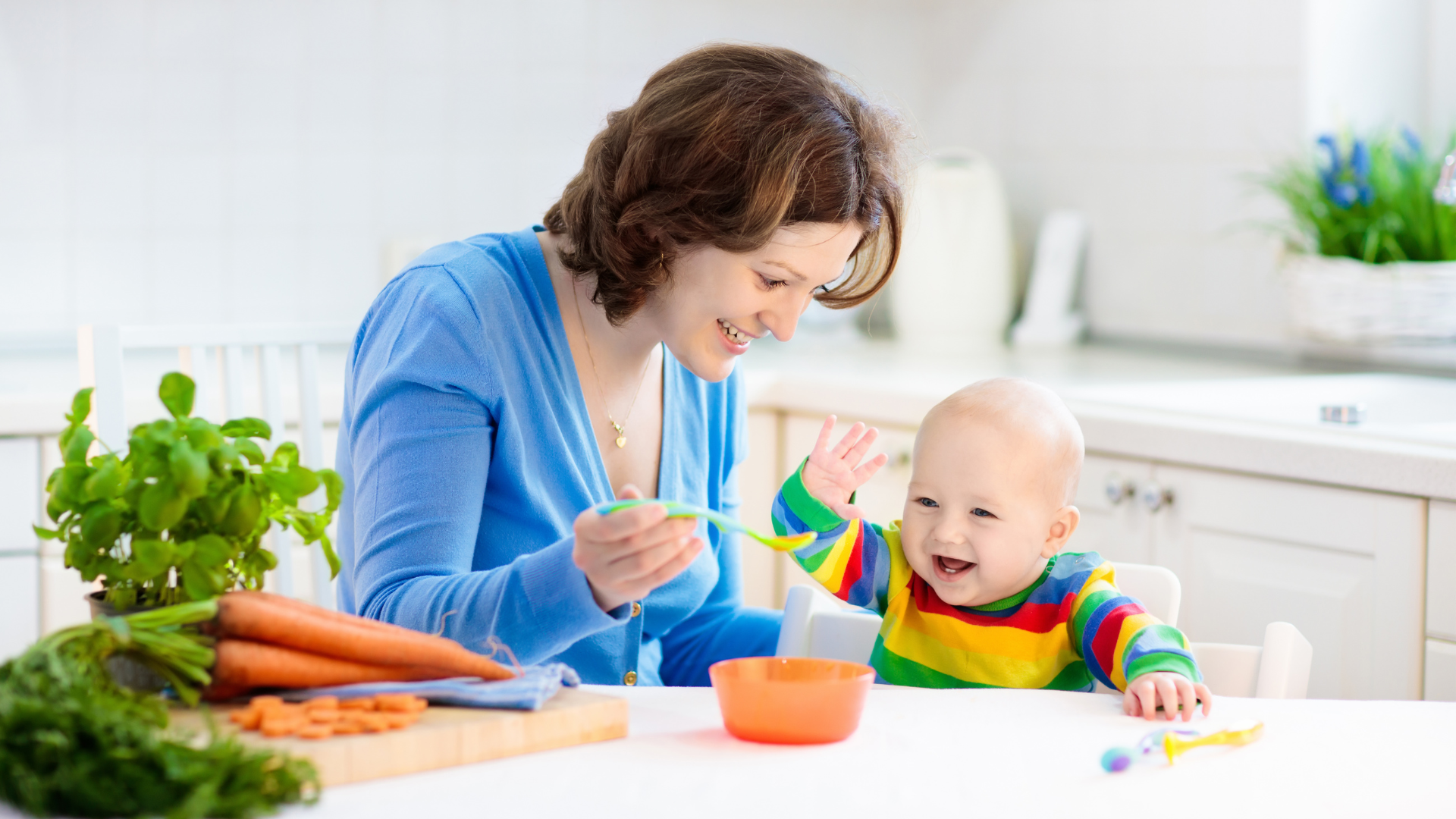First Bites: Introducing Your Baby to Solid Foods

The first 6 months of your baby's life are a whirlwind of cuddles, diaper changes, and marveling at their rapid development. But soon, a new and exciting chapter begins: introducing solid foods! This can be a messy, joyous, and frustrating experience all at the same time, but it's an important and essential step in your child's growth and exploration of the world. Together, we'll dive into making this transition a nurturing experience, filled with tips to keep both you and your baby smiling through the mess and excitement.
When to Start?
Introducing your baby to solid foods marks an exciting phase, blending anticipation with meticulous care. Around six months is generally when this adventure begins, but it's the readiness cues from your baby that truly signal the start. These include:
Stability: Being able to sit upright with minimal support indicates readiness for the first bites.
Interest in Foods: Your baby might start eyeing your meals or even reach out for a taste, showing curiosity about what you're eating.
Swallowing Ability: The capability to move food from a spoon into their throat without pushing it back out with their tongue is also a critical readiness sign.
It's not merely about age; it's about observing your baby's interest and physical readiness to embark on the journey of exploring solids. This period isn't just for nourishment but for exploration, discovery, and enjoyment of new textures and flavors, laying the foundation for healthy eating habits. As you navigate this milestone, patience and attentiveness to your baby’s cues will be your guiding stars.
What Foods to Start With?
Choosing the right first foods for your baby is crucial in laying a foundation for healthy eating habits. Start with single-ingredient foods that are easy to digest and low in allergens. Ideal first foods include pureed vegetables like sweet potatoes, carrots, and peas, as well as fruits like apples, bananas, and pears. Iron-fortified cereals are also a good choice, offering essential nutrients. Introduce one new food at a time and wait a few days before adding another. This way, you can monitor for any allergic reactions or sensitivities. The texture of these first foods should be smooth and easy to swallow. As your baby gets used to these foods, you can gradually introduce more variety and slightly thicker textures.
How to Make Mealtime Enjoyable?
Creating an enjoyable mealtime experience for your baby involves more than just the food itself. It's about engaging their senses and fostering a positive attitude towards eating. Utilizing colorful and child-friendly mealtime sets can make a big difference. These sets are designed to be visually appealing and easy for tiny hands to navigate, making the process of learning to eat more engaging and fun. Introducing varied textures and flavors in a playful manner can also encourage your baby to be more open to trying new foods. Remember, the goal is to create a happy, stress-free environment that makes mealtime a delightful experience for your little one. This approach not only helps in developing their taste buds but also in building healthy eating habits from an early age.
What About Self-Feeding?
Self-feeding is a crucial step in your baby's development, encouraging independence and fine motor skills. Start with soft, easy-to-grasp foods that they can pick up with their fingers. This practice helps them learn hand-eye coordination and develops their ability to judge distances. Pacifiers and teethers can also be helpful during this stage, especially as your baby might be teething. They provide a safe and soothing way for your baby to explore textures and relieve gum discomfort. The key is to be patient and allow your baby the time they need to learn at their own pace.
Dealing with the Mess
Introducing solids is often a messy process, but being prepared can make it more manageable. Bibs are essential; choose between cotton or silicone based on your preference and your baby's comfort. Cotton bibs are soft and absorbent, while silicone bibs are easy to clean and catch more spills. Burp cloths are also invaluable for quick cleanups after feeding. A sturdy high chair is crucial; it not only keeps your baby secure during meals but also helps contain the mess to one area. Opt for a chair that's easy to wipe down and has a removable tray for easy cleaning.
Introducing Textures and Tastes
Introducing a variety of textures and tastes is vital in developing your baby's palate and feeding skills. Begin with smooth purees, then gradually move to thicker textures and small, soft chunks. Offer a range of flavors to expose your baby to different tastes, which can help prevent picky eating later on. This gradual introduction allows your baby to adjust to chewing and swallowing more complex textures, and it also helps them experience the joy of eating different foods. Remember, patience and persistence are key, as some babies may need time to accept new tastes and textures.
Is My Baby Eating Enough?
One common concern for parents is whether their baby is eating enough when transitioning to solid foods. It's important to remember that every baby's appetite is different, and it can vary day by day. Look for signs of fullness, such as turning away from food or losing interest, and respect these cues. Babies this age still get most of their nutrition from breast milk or formula, so solid foods are more about exploration and learning than sustenance at this stage. If you have concerns about your baby's eating habits or growth, consult with your paediatrician for personalized advice.
Introducing solid foods is a journey of discovery for both you and your baby. With patience, the right tools, and a variety of foods, it can be a delightful experience. Remember, every baby is unique, so follow their lead and enjoy this new adventure in eating.






